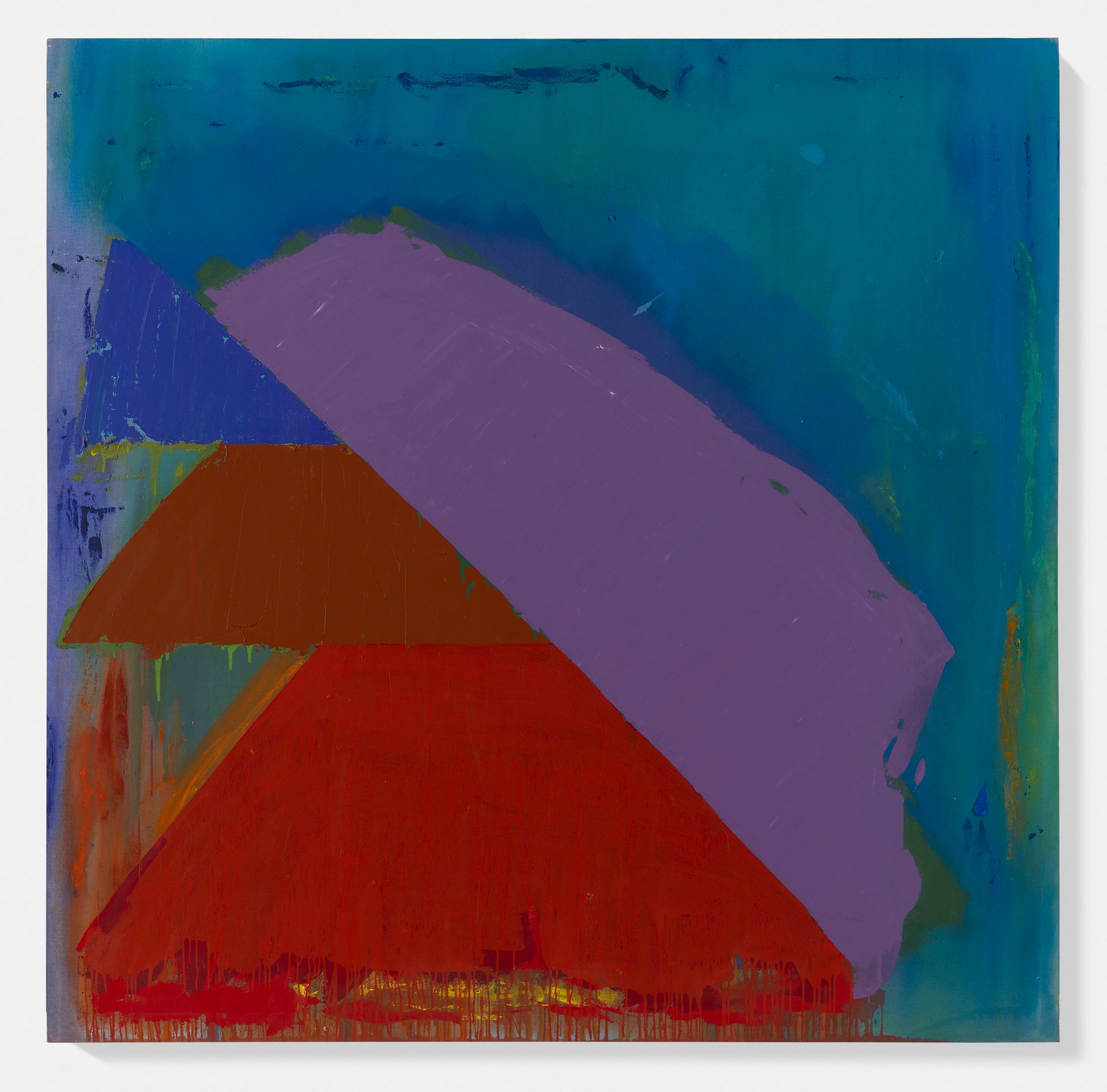The British abstract painter John Hoyland may seem like a surprising choice for the inaugural exhibition at Damien Hirst’s long-awaited Newport Street Gallery, which opened today, 8 October. Hirst has spent around £25m and more than a decade developing the 37,000 sq. ft complex in Vauxhall, South London, into a free public gallery to show works from his 3,000-strong personal collection, known as Murderme. He could have used the opening to show its breadth, from natural history curiosities to works by contemporary and Modern artists whose names are as famous as Hirst’s own: Jeff Koons, Sarah Lucas, Tracey Emin, Francis Bacon and Picasso.
But according to a spokeswoman for the gallery, Hirst planned to dedicate a solo show to Hoyland from the beginning. The two artists (and Yorkshiremen—Hoyland from Sheffield, Hirst from Leeds) first met in 1992. They hit it off again in 2009, two years before Hoyland’s death.

Hirst’s subsequent offer to buy works from what Hoyland called the “Aladdin’s cave” of his Wiltshire studio trumped other interested collectors, says Hoyland’s widow, Beverley Heath-Hoyland. The ambition of Hirst’s private museum promised to match the scale of the early paintings. “John was quite canny. He hid them; he didn’t want them to disappear without a trace. He wanted them to go into important collections and he wanted them to be seen by the public,” Heath-Hoyland says.
Thirty-three of Hirst’s acquisitions now fill the white, label-free walls of Newport Street’s six galleries, the former scenery painting studios for West End theatres, which have been converted by architects Caruso St John. Hirst has said he wanted to emulate the longer-term installations of the original Saatchi Gallery at Boundary Road, North London, where his shark in formaldehyde once stood in the early 1990s (none of Hirst’s own works will appear at Newport Street). The title of the exhibition, Power Stations, is Hirst’s invention, a tribute to Hoyland’s blazing palette and outsized canvases.
The Newport Street Gallery complex includes a branch of Other Criteria, a shop selling limited edition works and publications, as well as a restaurant called Pharmacy2, a reference to the original restaurant in Notting Hill, west London, which opened in 1998. Hirst designed its interior and it included a number of his works. Many Hirst-designed fixtures were sold at auction at Sotheby’s after it closed in 2003.

